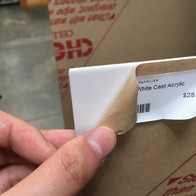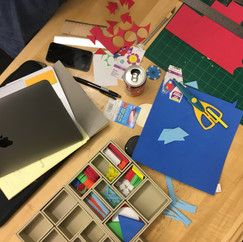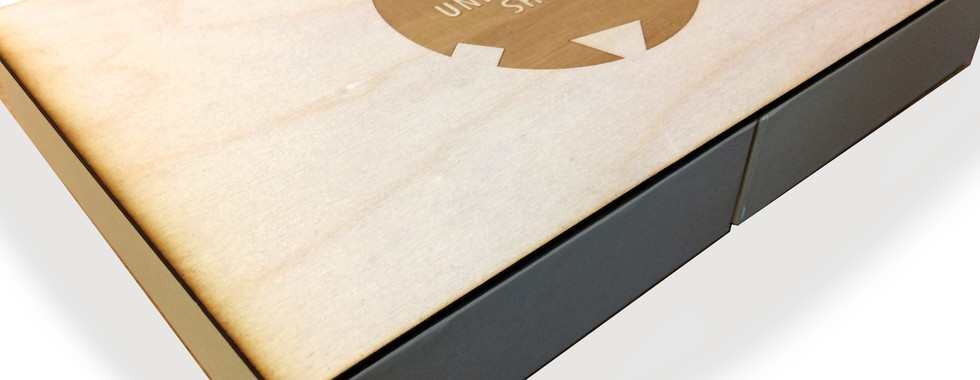Unfortunate Shapes
- teestadas

- Nov 5, 2018
- 7 min read
Updated: Nov 12, 2018
Game Design Workgroup: Alissa Rubin, Yuchen Tong, Yang Qian & Teesta Das

Team Shapify has worked tirelessly to bring together a bespoke multi-player game for families with children above the age of 5 to engage and enjoy adventurous stories in their homes and communities. Its handcrafted and produced with materials sourced at the California College of the Arts Graduate Studio for Interaction Design. Those who carry the love for nature, drama and travel experiences would love this!

THE MAKING OF THE GAME: WEEK1-
Concept Ideation had begun with various Affordances and Signifiers that we could use Gestalt theory with. Soon we decided to create an adventure game for those above the age of 10, that transports the players to another space using only signifiers and affordances that the players would need to guess. Playtesting (Check out the previous post) in studio with different games and materials like post-its and paper, made us iterate the shapes and helped us think how players would struggle and challenge themselves to see the creativity of each other! We also learnt how the rules could be enhanced, although its such a game that players could indeed be making their own rules or play even without rules. Our game strikes a great deal of familiarity with Pictionary. Therefore, anyone who has played that, could land up playing similarly. However, we found some players telling us, that they found playing this game easier as they dont need to draw and used to always struggle playing Pictionary! Haha!
MATERIAL: Towards manifesting our final game, we decided to source materials which would last us longer than paper. So we considered using foam for the shapes and birchwood for the lid. Polysheets: Unsure of the brand and if its actually PVC/ PP/PC: which could be lasercut them Felt sheets: Very bright colours, but while playing not very stiff, so difficult to play Chipboard(for lid): Relatively low cost, but only grey colour available.
SHAPES:
Since foam was selected as the best option for use currently, we hand craft all the shapes.

Based on the inventory list prepared, we created all the cut outs! Time taken: 2-3 hours.
STORY CARDS:
The story cards were designed to engage the players in a guessing the stories as they create them. For the final Gameplay, we had Environment, Situations, Disasters and Shelter Story cards. The designs are also useful to distinguish what the player will be creating. In the initial few playtesting, the players have been announcing it before they begin to create the word on the board.

BOX & LID DESIGN:
Working on the box design was also fun! Our lid was the board which the players use to create their shapes. While play-testing, it seemed like an intuitive use as the board itself. The making involved the purchase of a Birchwood sheet which was cut to size for the laser-cut machine. A file was created with the game name and a logo.
The design was kept intentionally simple as its the first version. However, we planned the detail of using the stand for the board which could help the lid snug-fit into the box.
We scavenged a box from a local store which helped us with holding the shapes and organizing them before the play.
Final Summary of the Game:
This is a discovery game, where the players build up a story of their wild adventure as they play! Each player, on their turn, picks a card from their hand that has a plot-point on it. One word or phrase of the plot-point is highlighted, and on their turn, the player will use a variety of colored shape pieces to build this word or phrase, and get the other players to guess it. If they are successful, they get a point and their card gets added to the plot-line. The guesser also gets a point, and play moves to a new player. Build and guess as many words or phrases as possible to get the most points, and create a crazy story of your team’s adventure as the game progresses. Read the whole story out at the end!
Objective:
Build and guess as many words or phrases as possible to get the most points. Create a crazy story of your team’s adventure as the game progresses, and read the whole story out at the end!

Set up:
No. of Players : Total Plot-line Cards
3 : 09
4 : 12
5 : 15
6 : 12
7 : 14
8 : 16
3 or more players sit in circle, where they can reach a central surface
The lid of the game box is set up in the center of the play surface as the build canvas, so everyone can reach
The various shapes, which are used to build the plot points on the story cards are placed near the canvas; they can remain in their boxes
Stacks of story cards are placed within easy reach of each player
A 1-minute electronic timer is placed beside the canvas (not included)
Each player is dealt, at random, 5 cards from among all the story cards. Do not show your cards to anyone!

Starting play:
Play starts with the youngest player who has an Environment card in their hand; the first player must start with an Environment card to set the scene for the story
The player whose turn it is, the “builder,” draws a card from their stack (whichever one they feel will make most sense to add to the developing story, or one they simply want to build), keeping it hidden from all other players, and sees what plot-point they have to build
The builder identifies their card type for other players (ex: by saying “this is an Environment card”)
The builder’s goal is to get the other players to guess the highlighted word(s) on their story card, by building that word or phrase, or clues to it, out of the shapes
The builder has 1 minute to build, starting from when they touch the shapes
The builder can use as many shapes as they need, but must keep their shapes on the ‘build canvas’—the box lid!
The builder can overlap shapes, and manipulate them to create movement DOs & DON'Ts:
The builder may not create letters or numbers from the shapes
The builder may not speak, make sounds, or gesture, except as necessary to confirm the guesses of players (Optional rule: players may nod to encourage guesses on the right track)
Players can guess at any point during the building, and there is no penalty for incorrect guesses; they cannot touch the shapes on the canvas, or otherwise help the builder
The player’s guess may not exactly match the words on the card; for example the card might read “fall in a pit” and a player might say, “You’re falling into a hole!” You will have to judge if the meaning of the phrase is sufficiently close. Consider whether the words used can be substituted for each other, or if there is a variation in meaning. For example, “you got shoved into a pit,” or, “you fell in a trap” have slightly different meanings from the phrase “fall in a pit,” because the first indicates malicious intention (shoving is rude!) and the second indicates that you are being hunted.
Some cards show alternative words that are acceptable guesses
Once a player guesses correctly, the builder reads the story card aloud
The builder then places the story card at one side of the play area, building up the plotline
The builder draws a replacement card so they always have 5 in their hand
Few players are confuse about how to start, there could be 2 basic versions of this game to help.
Version 1: Everyone-gets-a-turn
In this version, play moves around circle, and builders get more points than guessers
Once a player guesses correctly, the builder takes 2 point tokens (the ones shaped like stars) and guesser takes one point token
Play moves clockwise to the next person in the circle, once a build is correctly guessed
If no player guesses the build correctly in the time limit, the builder places their story card facedown in the plot-line
This facedown card counts toward the total number of plot-line cards, but does not get read as part of the story
The builder draws a new card so they continue to have 5 cards in their hand. No one gets a point, and play passes clockwise around the circle.
Version 2: Competitive play
In this version, play is more competitive, and the person who correctly guesses a build gets to go next, and the number of cards in your hand can decrease
Once a player guesses correctly, the builder and guesser each take 1 point token
The guesser is then the next person to pick a story card and get a chance to build
If no player guesses the build correctly in the time limit, the builder places their story card facedown in the plot-line
This facedown card counts toward the total number of plot-line cards, but does not get read as part of the story
The builder does not draw another card. For the rest of the game, they will have one less story card in their hand—after one failed guess, they will have 4 cards; after two failed guesses, they will only have 3 cards, and so on). A player may be reduced to 0 cards in their hand, at which point they have to guess a build correctly to win back a 1-card hand.
No one gets a point, and play passes clockwise around the circle.

Note on the Disaster cards:
Some Disaster cards have a ‘solution’ written in mid-yellow on them. This is a bonus-build: if your disaster in red-orange is correctly guessed, you may announce you are also building a solution. You have one minute for the solution (do not add this minute to any remaining time from your first build). If guessed correctly, the builder gets two extra points, and the guesser gets one.
Winning:
Play stops when a certain number of story cards have been placed in the plotline—this total includes facedown cards. The number of cards per player varies depending on the number of players: for 3-5 players, 3 times the number of players; for 6-8 players, 2 times the number of players (card numbers can be increased for longer game play).
The player with the most points at the end is the winner.
Reflections and ideas:
After play-testing the game on Nov 5, building the website for this game could be a great next step: To add a context of why disasters and adventure? Wondering how would the world be for a child growing up with Climate Change? Made available online, buyers can create a Climate change game box to gift their loved one (maybe their family members or their own children) an experience of different adventures of environments, shelters and disasters. It could be a great sharing tool for stories around your own adventures that you thought you could document--so if you would like to share your adventure stories from the past with us, we can customize the story cards for you. On our website, we would have more shapes available from where you can select your shapes for the box. Hope to create this soon!


































Comments